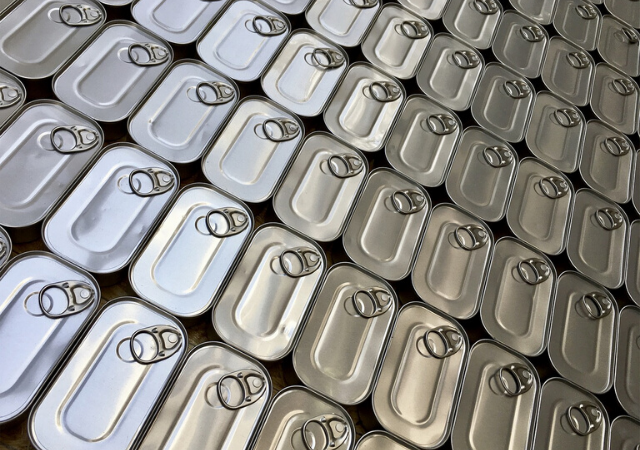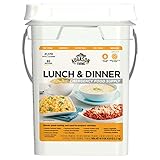For most people, the ideal way to store food safely is to stuff it into the refrigerator. But when tropical storms and other natural disaster cause power outages, this may not be the best idea and is a futile exercise.
Recent tropical natural disasters have shown that power outages can last for days, weeks or even months, thus rendering your refrigerator stored food useless and unsafe to eat, unless it is consumed right away.
Because of this possibility, you should aim to prepare food for extended outages, stockpile food that does not require refrigeration and use adequate methods to store food safely. Always remember that food poisoning can occur if food is not stored according to its food type.
Food Safety Facts You Should Know
The dangers of consuming unsafe food are very real. The World Health Organisation published ten facts about food safety to address the prevalence of food borne diseases. Of note on this list, is the fact that each year, 1 in 10 people get sick and 420,000 people die from consuming contaminated food. Food may be contaminated during production, distribution, preparation and storage. Spark Food Safety further explains that parasites, bacteria and viruses which are characteristic of food borne illnesses, can result in infections and irritations of the gastrointestinal tract.
Food Storage
Storing food at the right temperatures can prevent harmful bacteria from growing and contaminating your food. Bacteria that results in food poisoning multiplies at temperatures between 5 and 60 degrees celcius. However, the bacteria multiplies at its quickest rate between 36 and 38 degrees celcius. Food poisoning bacteria can survive in temperatures below 5 degrees celcius, however, nearly all are killed above 60 degrees celcius.
High risk foods such as dairy products and fish can spoil very quickly, if they are not kept in the required cold temperature. Frozen foods that have thawed should be eaten straight away and should not be refrozen. This is an important point to remember in situations where there is no electricity and frozen foods have thawed. These foods should not be refrozen because bacteria can grow and multiply during the defrosting and freezing processes.
How to Create an Emergency Food Supply
A good rule of thumb to follow when creating an emergency food supply is to store foods that do not have to be frozen or chilled. Thankfully, this is a long list and it includes cereals, flour, sugar, canned goods, dried goods, sauces and spices. These are relatively low risk foods, that will not encourage bacteria growth like the high risk foods.
When creating an emergency food supply, food should be:
- Kept in a cool and dry spot that is free from moisture
- Stored in re-sealable bags and containers
- Inspected for spoilage before use and discarded where necessary
- Discarded if cans are dented, corroded or swollen
- Consumed before the “use by” date
- Regularly swapped with fresher goods
The Best Types of Food for Emergencies
In dire situations, food shortages and water shortages are inevitable and it may be difficult to access these basic staples. That’s why you should take stock of your family’s needs and preferences and create an emergency supply of food that can last a long time. When creating your survival food kit, you should aim to have enough food to last your entire family (including pets) for at least one month.
The best types of food for emergencies are those that can remain fresh for at least six months. One must be mindful of the shelf life of food when creating an emergency supply. The shelf life of food is the length of time that food can be kept and still maintain its freshness and quality.
Because a loss of power is one of the most likely impacts of a natural disaster, foods that do not require refrigeration or freezing should be stockpiled for emergencies. Also, foods that do not have to be cooked or specially prepared should be included.
Suggestions for Emergency Food Supplies
Ready.Gov suggests the following food items which are useful when selecting emergency food supplies:
- Canned food
- Can opener
- Eating utensils
- Protein or fruit bars
- Dried cereal or granola
- Peanut butter
- Dried fruit
- Canned juices
- Non-perishable pasteurized milk
- High energy foods
- Food for infants
- Comfort/stress foods
- Water
Although it may be difficult to store several months’ supplies of water, it is advisable to stockpile at least a two week water supply. If storing tap water, replace the supply every three months. If storing store-bought water, check the expiration dates and rotate often. Always keep a bottle of unscented liquid bleach on hand to sanitize and disinfect water.
Quick Tip: Download the free Storm Preppers Emergency Food Supply Kit Checklist and create your own emergency food supply. The checklist contains over forty items that you can include in your food stockpile.
How to Store Food Safely
There are some key tips which should be utilized to store food safely so that it’s quality is not compromised. Food storage areas in the home include pantries, cupboards and shelves; and in commercial spaces, there may be food storage rooms and pantries. The main takeaway is that the storage area should be one that’s safe and takes the following points into consideration:
1. Surroundings
Food storage areas such as cupboards and pantries, should be dry and free from moisture, not close to stagnant water, located away from chemicals and waste disposal areas. These environments may be potential sources of contamination and may harbour pests.
2. Construction
The room that food is stored in should be an adequately sized structure that does not have any cracks or openings that could allow pests and insects to enter. Also, roofs should be sealed, and windows and doors should be outfitted with screens.
3. Internal Structures
At the very minimum, areas where food is stored should be kept clean and should be well ventilated. Floors and other surfaces should always be clean and if there are any signs of mold or water seepage, these should be rectified immediately.
4. Storage Management
Where food is stored, there should be no chemicals or hazardous materials. Foods with specific storage requirements should be stored as stipulated. Storage areas should be cleaned regularly and spills should be wiped up as soon as possible.
5. Pest Control
Food should be stored in pest resistant containers that are designated for food storage use only. If chemicals are used to control pests, special care must be taken to ensure that the food in storage is not contaminated.
It may seem a bit overwhelming to create and store an emergency stockpile of food. The most effective approach is to start small and then increase your supply. Start by creating a one week supply and then gradually increase it to the one month supply. There are always options to purchase easy to store survival food packages, but these may be more expensive. The aim is to start now with a one week supply, so that you will be prepared for any natural disaster that may come your way.





